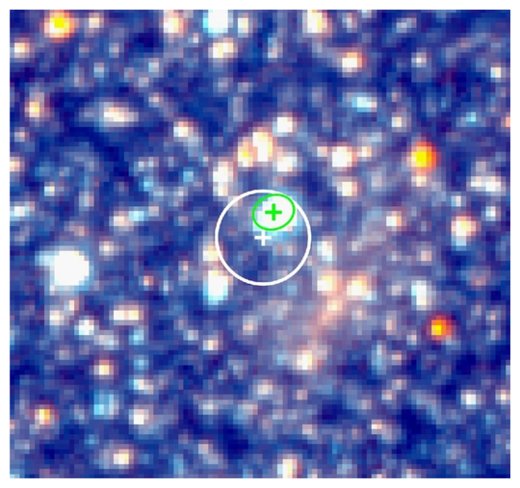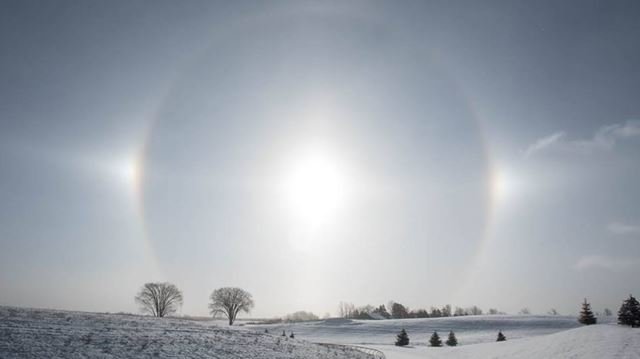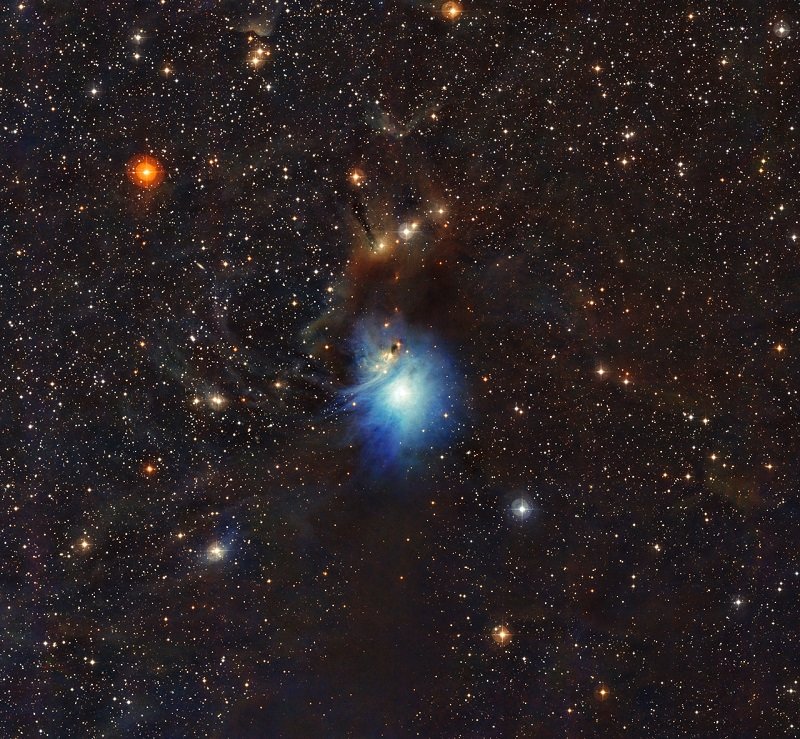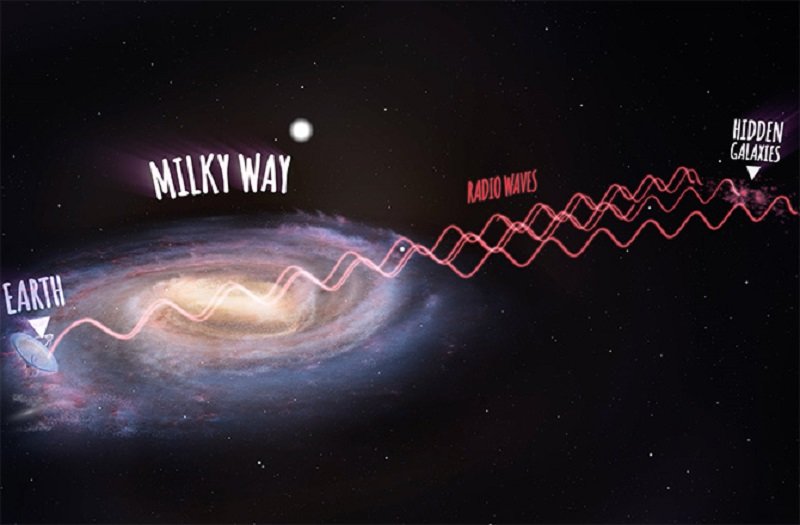
© .Breanna Binder/NASA/Royal Astronomical SocietyAn image obtained by UW astronomer Breanna Binder’s group using the Hubble Space Telescope, showing the supernova impostor SN 2010da circled in green and the X-ray emission indicated by a white cross. Reproduced from a Royal Astronomical Society publication.
Breanna Binder, a University of Washington postdoctoral researcher in the Department of Astronomy and lecturer in the
School of STEM at UW Bothell, spends her days pondering X-rays.
As she and her colleagues report in
a new paper published Feb. 12 in the
Monthly Notices of the Royal Astronomical Society, they recently solved a mystery involving X-rays — a case of X-rays present when they shouldn't have been. This mystery's unusual main character — a star that is pretending to be a supernova — illustrates the importance of being in the right place at the right time.
Such was the case in May 2010 when an amateur South African astronomer pointed his telescope toward
NGC300, a nearby galaxy. He discovered what appeared to be a supernova — a massive star ending its life in a blaze of glory.
"Most supernovae are visible for a short time and then — over a matter of weeks — fade from view," said Binder.
After a star explodes as a supernova, it usually leaves behind either a black hole or what's called a neutron star — the collapsed, high-density core of the former star. Neither should be visible to Earth after a few weeks. But this supernova — SN 2010da — still was.
"SN 2010da is what we call a '
supernova impostor' — something initially thought to be a supernova based on a bright emission of light, but
later to be shown as a
massive star that for some reason is showing this enormous flare of activity," said Binder.
Many supernova impostors appear to be massive stars in a binary system — two stars in orbit of one another. Stellar astrophysicists think that the impostor's occasional flare-ups might be due to perturbations from its neighbor.
For SN 2010da, the story appeared to be over until September 2010 — four months after it was confirmed as an impostor — when Binder pointed NASA's
Chandra X-ray Observatory toward NGC300 and found something unexpected.
"There was just this massive amount of X-rays coming from SN 2010da, which you should not see coming from a supernova impostor," she said.




Comment: Just two days before in nearby Caledon, Ontario: Morning 'sun dog' captures attention of residents in Caledon, Ontario